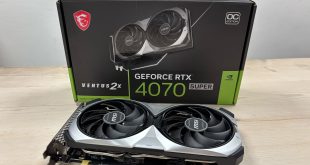The interior of the Bitfenix Raider is painted black like the majority of cases today. In it's original configuration we can use up to 7 hard drives and 3 optical drives. There are 4 areas cutout for cable management that have rubber grommets protecting them. These cutout areas are nice to have if you are concerned about a tidy system build. They allow us to hide most of that cables that would otherwise just be a visible mess.
If we were going to use a full length graphics card in our system build, the Raider is designed to handle them all. All that is required is to remove 2 thumb screws that hold the top 3 drive bays in place and we are good to go. This is very convenient for those that don't have a large number of hard drives to contend with.
The Raider Mid Tower is designed for a bottom mounted power supply and has a cable management cutout right next to the PSU.
The motherboard tray has a large cutout for easy access to the back of our motherboard without having to remove it from our chassis. This comes in handy when changing cooling solutions, saving us the time it would take to remove the board before mounting the cooler.
We can install a maximum of 7 hard drives in the Raider. Their tool free drive bays make adding or removing drives a breeze.
The Raider includes all the required top panel connectivity options like 4 USB 3.0 ports, 2 audio jacks, and the On/Off and Reset buttons. We appreciate that Bitfenix added backward compatibility for USB 2.0 since not everyone has the connection available for the USB 3.0 ports.
To close out this portion of our review we have 2 images that show our system fully installed and the cable routing functionality offered with the Bitfenix Raider.
 KitGuru KitGuru.net – Tech News | Hardware News | Hardware Reviews | IOS | Mobile | Gaming | Graphics Cards
KitGuru KitGuru.net – Tech News | Hardware News | Hardware Reviews | IOS | Mobile | Gaming | Graphics Cards















Great value for money, under £70? looks a bit bland however, but its a minor thing in this sector as all cases do.